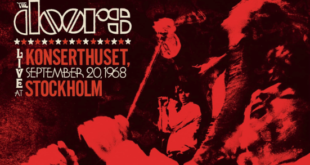
There is nothing more beautiful than sunset at the New York Botanical Garden (NYBG). So a perfect time to arrive for Orchid Evenings at the largest botanical garden in New York is perhaps around 5 pm, which is what my friends and I decided to do. We went to the NYBG’s own Hudson Garden Grill, which has a lovely New American menu with delicious-looking dishes (we perused the plates of fellow patrons – duck and waffles, burgers, mussels, frites), and some intriguing offerings (e.g. their own monkey bread). Only there for appetizers, we ordered lightly and had some delicious wine.
The cheese course was superb, plated beautifully with unique and sumptuous garnishes, and my Cabernet Sauvignon was a lovely finisher. It was a memorable way to begin the Orchid Evening.

By the time we entered the Enid A. Haupt Conservatory the sun was setting over the Garden, its burnishing reds filtered through the gorgeous panes of the ornate Victorian conservatory, which was inspired by the Duke of Devonshire’s head gardener, Joseph Paxton, during the Victorian era. The Orchidelirium exhibit’s narrative about the Victorian orchid mania is extensive. Read about the Victorian upper class’s obsession with orchids, the information posted on placards with pictures of key orchid icons of the period like “Orchid King” Frederick Sander; Benedikt Roezl, the “Prince of Orchid Hunters”; Charles Darwin; the Duke of Devonshire; and Paxton.
Paxton innovated marvelous additions to the Duke’s greenhouses (almost an acre under glass) to nurture and grow the Duke’s thousands of orchids, which were brought back by his rapacious orchid hunters looking for the singular orchid “jewel” that might allow them to pocket a percentage of the $50,000 the orchid might bring at market (one rare orchid might sell for $100,000 in today’s currency). The Duke is credited with initiating the Victorian craze known as orchidelirium, the theme of this year’s Orchid Show at the NYBG.

The Enid A. Haupt Conservatory is magical in the evenings. Forbidden and haunting, its fairy tale setting evokes the fantastic, ethereal, and whimsical. Having been to the Garden in the daytime to see and learn about what inspired the Victorians to spend boatloads of money to hire adventurers to travel to the outer reaches of the world, to undiscovered and dangerous terrain, “just for orchids,” I wanted to see the beauties in the Conservatory when the cloak of darkness pressed against the glass from without. Some of the stupendous flowers would be in partial shade, their colors deepened to evoke a mysterious and exotic symbolism.

Indeed, it is at night when some of the most intriguing pollinators of orchids visit the blooms to carry out the plants’ desire to maintain their species forever, or at least as long as the planet isn’t overcome by the corporate economy’s unjust treatment of it and its plant, animal, insect, and human inhabitants.
Matthew Pace, Ph.D. is a botanist at the NYBG. He told us that scientists know very little about orchids, and until recently little to nothing about their pollinators. Only in the last decade have they begun to investigate more deeply the complex interplay between orchids and their pollinators.

In one of the NYBG’s beautiful galleries, Pace used slides to show how orchids have fascinating ways to effect species immortality. One set of orchids (Ophrys) actually evolved to look like bees and wasps. The male bees ravish the orchid, in the process covering themselves with pollen, which they then transfer to another orchid. Researchers have noted that some of these bees prefer the available and willing orchids to complaining or uninterested female bees who may even reject them.

Pace also talked about an orchid whose scent imitated that of a dying honeybee. Detecting the scent, a wasp goes into attack mode, and repeatedly stings the orchid thinking it’s killing a honey bee. Clever orchid. The wasp is covered in orchid pollen and flies off to another orchid where he transfers the pollen; the orchid’s seed reproducing cycle begins. Pace also showed us a YouTube video of how the Darwin Star Orchid is pollinated by a moth with an incredibly long tongue, something Darwin (a Victorian) intuited during his evolutionary studies which encompassed orchids.
When we first entered the exhibit, we were met with native music played on Balinese instruments, appropriate considering that orchids were plundered from jungle habitats in the Far East. And when we entered the gallery with the crowning glory of the Orchid Show, the orchid mountain, a DJ greeted us with music with Latin themes. It was hard to contain our enthusiasm and not break out into a salsa, merengue or bachata.

Altogether, the music, the lighting, and the orchids created an exciting and exotic atmosphere which transformed our spirits and mood. It was a fitting celebration of those zany Victorians. It was their wild passion for the rare orchid gems that eventually resulted in the conceptualization of conservatories like the one at the NYBG.
And it was Victorian orchid mania that spurred innovations in plant hybridization, propagation and conservation. These activities grew the already monumental flowering plant family Orchidaceae, with over 30,000 naturally occurring species (from tiny to large), into the over 150,000 man-made hybrids that exist today.
Orchids are not just for the wealthy anymore. Their popularity has become a democratic love that all economic classes can afford and enjoy. This is revealed in the current craze that places orchids on shelves of grocery stores, nurseries, and large variety stores. Orchids are still a profitable, thriving business. One would hope that it is being conducted without the nefarious machinations the Victorians were guilty of.

Created and designed by Christian Primeau and spurred on by the expertise of orchid curator Marc Hachadourian, Orchidelirium is a prodigious showcase commemorating the NYBG’s 125th year. We have the wealthy, upper-class Victorians to thank for the existence of today’s astounding orchid collections.

On a sadder note, we also have them to thank for the wanton destruction of plant and animal life by their hired adventurers in the quest for profit. But if the NYBG purchased orchids from one of the most avaricious, “The Orchid King,” Frederick Sander, nevertheless it turned out well. One, a Vandopsis gigantea purchased in 1904, is on display. In its 112th year, it luxuriated at the NYBG thirteen years after the Garden was established, and happily remains here long after those who plundered the orchids died.
There are positives despite the rapacity, greed, and colonial predation of the Victorian era. The NYBG is one. Begun as an end result of the mania, the NYBG was transfigured. As the Victorian period with all of its excesses were passing into history, the Garden began a new phase emphasizing the best in plant cultivation and preservation of habitats and species. Currently, the NYBG is a designated Plant Rescue Center. Through the Convention on Illegal Trade in Endangered Species (CITES), the NYBG has been mandated to nurture and bring to health orchids that have been collected illegally in the wild and seized at international borders.
With hard work from dedicated scientists, researchers, professional gardeners, and volunteer staff, and loyal support from donors and members, the NYBG will continue to delight with its exhibits and be at the forefront of conservation and preservation efforts to save shrinking habitats and plant species. With their efforts, the support of patrons and members, and a little luck, the NYBG’s worthy mission will continue, and the public will experience memorable “Orchid Evenings” for years to come.
Orchid Evenings are on Saturdays (April 2, 9, 16) and one Friday (April 15), and begin at 6:30 pm with a complimentary cocktail.
World Beat: Music and Dance Around the World of Orchids brings live performances from cultures around the world on Saturdays and Sundays throughout the exhibition. Tickets are at the NYBG website
 Blogcritics The critical lens on today's culture & entertainment
Blogcritics The critical lens on today's culture & entertainment



